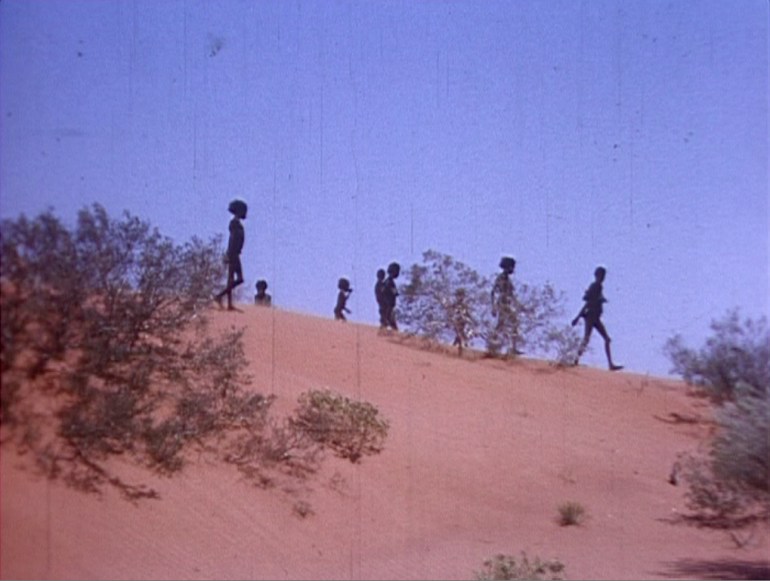By Rodney Appleyard
Making a documentary appears to have little in common with jamming in a band. Contact co-director Bentley Dean begs to differ.
It was Yuwali – one of the original indigenous Australians captured on film – that brought the analogy to life more than forty years after the initial contact with white Australia spurred the documentary.
“It was like we were playing our own instruments,” Dean says. “Yuwali would re-enact scenes on the spot, like when she sees the patrol officer’s car for the first time. She would hide behind the exact same tree she hid behind when they were being followed, and we’d film her.
“She’d then look to the camera and say things like: ‘cannibals’, which we hadn’t planned for Those descriptions overlapped perfectly with the archive footage and drove the narrative.”
Dean and co-director Martin Butler relied on a vast array of techniques to retell the story, which was inspired by incredible 16mm colour archival footage of the Martu tribe’s initial contact with patrol officers clearing the desert for a series of rocket tests.
(Story continues below.)
Original 16mm archival footage from Contact.
However, the 16mm film of the first contact was not in good condition when Dean and Butler first got their hands on it. It was transferred into high definition footage by Digital Pictures, which Butler says enhanced its authenticity. Stabilising software made the picture less ‘joggy’ while grading brought out its natural colours.
“In the original footage, when the woman comes across the lake, we couldn’t see her holding the hand of a six year old boy. But in the HD version, boom, it’s there. Yuwali was adamant the boy was there, but we didn’t believe her at first,” Butler says.
The filmmakers rely on more than archival footage and stills to bring the story to life, including imaginative time lapses, reconstructions, real life interviews, a filmed trip back to the homeland and an emotionally charged musical score.
Armed with just two Sony HVR-Z1P handheld cameras, a Canon stills camera and sound recording equipment, they made the documentary “on the smell of an oily rag”.
As well as directing, Dean shot the film while Butler recorded the sound. They used clever, inexpensive tricks, to provide a sense of the isolated environment, such as time lapses.
“Some people think the time lapses are digitally manipulated, however they were all taken with a digital stills camera over the course of a night time. We programmed it to take a certain amount of shots per minute,” Dean says.
“Each time, we ended up with about 1,000 odd stills overnight, put them together and produced something quite stirring.”
The shot of the stars moving in a curved shape through the night perfectly illustrates how the world spins on its axis. This shot was used to give the viewer a sense of the Martu tribe living in the middle of nowhere.
“The third character in the documentary was the land,” adds Dean. “You see this immense landscape and you wander how you can do it justice with just a small little video camera frame. So these time lapses were important for capturing the bigness, space and beauty of their homeland.”
Butler says they also took the viewer from one day to another, effectively bridging the story together.
Other footage was chosen carefully to illustrate storylines in just a few images, which would have taken much longer to explain in words. For instance, we see a couple of small white children marvelling at the rocket launch, without realising its potential danger to the Aboriginal children.
Dean spent hours trawling through archive footage from the ABC and other sources to match the story’s chronology. The powerful visuals were used to humanise the story and make the audience think about broader issues in today’s society.
Contact was awarded a Walkley Award for Coverage of Indigenous Affairs and an AFI Award for Best Feature Length Documentary. This article first appeared in the October 2009 issue of INSIDEFILM magazine. Check out the trailer here.


